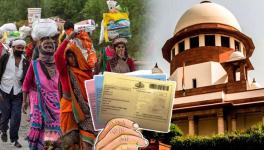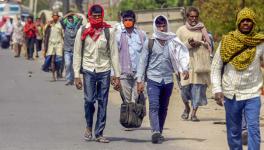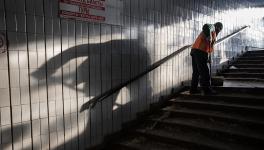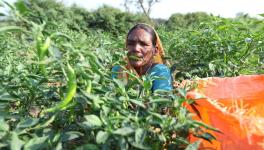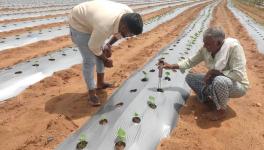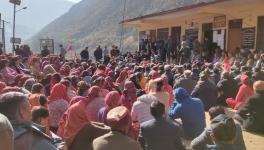Returning Migrants Can Become India’s New Water Warriors
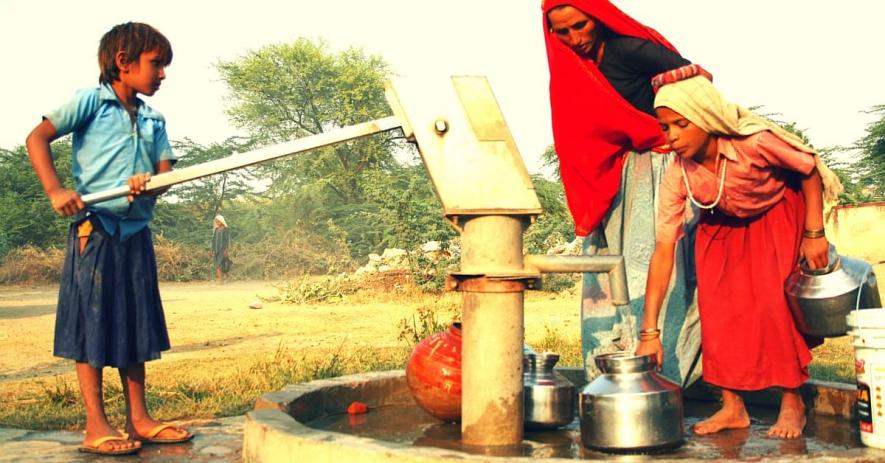
Atmanirbharta or self-dependency is the new buzzword during the Covid-19 pandemic, but in India’s villages any modicum of self-sufficiency depends on how much water is available, and its quality. Water is a key determinant of autonomy and therefore it needs to be recognised as a “Corona warrior”.
Access to water enables agriculture, livelihoods and food and nutrition security. Water is a critical factor in eliminating poverty—or perpetuating it. According to the World Economic Forum’s 2020 Global Risk Report, there is a high-impact risk to the world from a “significant decline in the available quantity and quality of fresh water, resulting in harmful effects on human health and economic activity”. This was before the Covid-19 pandemic “paralysed” the world. After the pandemic, water has become even more critical to survival.
The future of lakhs of migrants who returned to their villages is uncertain. Experts have predicted that at least a third of them will not return to the cities in search of a living as they are now reluctant to leave their villages. Relieved to be home after the torturous journey home during the lockdown, they are worried about survival and making ends meet. Fortunately, there are many examples from across the country where villagers, especially the returning migrants and youth, have started working towards water conservation and regeneration of nature.
Agriculture in large parts of India is constrained by lack of water. As a result, people migrate when they find no livelihood options in and around their farmlands. Shoring up water resources to attain village-level water sufficiency will improve the rural economy. If there is adequate water for hygiene and nutrition it will surely bring down the extent of distress migration. With local water sources in good shape, villages can develop as focus points of development and both agriculture and village-based enterprises will stand a better chance. More business opportunities will then follow for the returning migrants and their search for greener pastures can end at home.
Sufficiency in water implies conserving rainfall using locally-appropriate water harvesting systems and structures such as check-dams, ponds, talaabs, bunds, recharge wells and other methods. This conserved water can be used directly or it can help recharge surface and groundwater reservoirs. Their judicious use, such as by adopting crop patterns suitable to available water resources and use of the most efficient water conservation tools and techniques, will enable household sustenance even during drought-like scenarios. There should be least dependence on piped water supply from distant locations, which is a highly inefficient and expensive system. It is time farmers were allowed to determine crop patterns depending on their assessment of water availability, after using the right tools and adequate monitoring so that none are excluded from accessing water.
This is not a pipe dream. Scores of successful initiatives exist in India’s diverse rural landscape. Some were recently captured by the news as migrants in many places joined other villagers to prepare structures to capture rainwater before the sowing season. These stories tell us how water can be used judiciously on a wider scale with the help of governments and civil society. These recent water conservation and management efforts have made migrants the new water warriors.
In the Bundelkhand region of Madhya Pradesh, the civil society organisation Parmarth has started assisting skilled workers who have recently returned home due to the Covid-19 lockdown. More than 500 labourers returned to villages in Tikamgarh and Chhatarpur districts and are engaged in repairing and deepening existing ponds and talaabs and building new ones. The new slogan of those building this water-conservation infrastructure is, “Ab pardes nahi jaayenge, khet mein fasal ugaenge, gaon ko khushaal banaenge—we will not leave for the city but do farming and improve the village.”
In Agrotha village of Chhatarpur, with a population of 1,800, a pond constructed by the government in 2010 at a cost of nearly Rs.1 crore had become redundant due to lack of catchment flows and seepage. Ten years later, with the support of the forest department, over one hundred returned migrants contributed funds to repair this pond and dig a canal to divert the drainage into the pond, as had been originally planned. In Bhanwarpur village of Banda district in Uttar Pradesh, water has started flowing in the dried-up Gharar river after more than 200 of the returned labourers cleared the riverbed of weeds and mud. To tide over the difficult period of waiting until the sowing, and as an incentive for them to finish the work, Parmarth has raised funds for residents to get 10 kg of wheat, 5 kg of rice, dal and other essential items, informs Sanjay Singh, secretary, Parmarth.
Pratibha Shinde of the Lok Sangharsh Morcha, an organisation that is active in the tribal belts of Nandurbar and Jalgaon districts of Maharashtra, also says that migrants of the region have decided to remain in their villages. “This year they are clear about not going back,” she says. The NGO and farmers, including the returnees, are working on conservation structures to renew local irrigation and water assets. This is in addition to the 42,000 migrant labourers who have started MG-NREGA work in 93 villages in Nandurbar and 52 villages in Jalgaon. Tree-plantation has been completed on 25 hectares of land: some 27,000 samplings have been planted. Continuous Contour Trenches that conserve water in arid areas are being made, wells dug, and farm bunds and other structures are also in the works.
“With the state tribal department in 32 villages of Nandurbar and Jalgaon, we are working on doing bamboo plantation on denuded hill slopes, for which tribals are entitled to MG-NREGA benefits,” Shinde says. More than 80% of the tribals are women. With job cards for migrants and their simultaneous engagement in water and soil conservation and afforestation, the effort is to prevent the distress migration of farm workers and landless labourers.
Our own experience with the Tarun Bharat Sangh, the Alwar-based NGO whose chairperson is the Water Man of India Rajendra Singh, testifies to how important conserving and replenishing water resources is and the spillover effect these have on income and employment. In over 3,000 acres of area where no agriculture was possible, cutting across some 100 villages in Bharatpur, Dholpur and Karauli districts, the migrants and youth are earning daily wages by building water conservation structures. “These are lands previously considered unproductive. Seeing the problem that forced them to migrate getting resolved builds people’s confidence in local sources of livelihood,” says Singh.
The youth are also being trained to conserve water using local know-how and material, alongside fostering nurseries for plantations. It is a fact that self-reliance does not happen on its own. It starts from the soil. It comes from villagers being able to find work and their necessities in their villages. As Singh says, “Only when villages become self-reliant units will India become a true republic.”
India needs to find ways to bring greater prosperity to villages with the assets that it has, especially its natural resources and its untapped human resources. Regenerating nature through soil and water conservation and afforestation have the potential to create employment and pave the way for a far higher degree of self-reliance. In difficult times like these, one of the most important assets of ordinary people is hope—but even hope must rest on sound logic, scientific planning and a plan of action.
The author is vice chairperson, Tarun Bharat Sangh and director, research, at Safai Karmachari Andolan. The views are personal.
Get the latest reports & analysis with people's perspective on Protests, movements & deep analytical videos, discussions of the current affairs in your Telegram app. Subscribe to NewsClick's Telegram channel & get Real-Time updates on stories, as they get published on our website.









